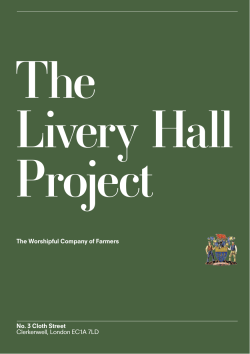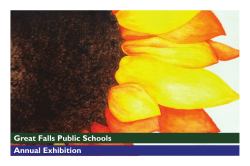
Ukara: Ritual Cloth of the Ekpe Secret Society
Ukara: Ritual Cloth of the Ekpe Secret Society New Hood Exhibition Features African Secret Society Textiles Hanover, N.H.—April 28, 2015—The Hood Museum of Art, Dartmouth College, is proud to present an exhibition examining the signature textile of the Ekpe secret society, a multi-ethnic all-male association in southeastern Nigeria and western Cameroon. Ukara: Ritual Cloth of the Ekpe Secret Society explores both the longstanding cultural practice the cloth represents and the artistic process involved in its creation. Planned as a complement to the Hood’s other spring exhibition, Auto-Graphics: Works by Victor Ekpuk, the exhibition runs from April 18 through August 2, 2015, with an opening event scheduled for Friday, May 15. It is accompanied by a twenty-page, full-color booklet with essays by Eli Bentor and Jordan Fenton, and an introduction by Hood Curator of African Art Ugochukwu-Smooth C. Nzewi and Hood curatorial senior intern Elissa Watters ’15. Ukara cloth is made of plain cotton but transformed into a ritual object when nsibidi symbols are inscribed onto it through indigo dyeing. Nsibidi is a body of ideographic, abstract, and gestural signs deployed by the Ekpe society as a form of coded communication. In part because of their appropriation, exclusive use, and understanding of nsibidi, Ekpe members in the pre-colonial past were thought to have access to the spiritual realm and were, therefore, empowered to make and enforce societal rules and norms. While their political authority is largely diminished today, Ekpe membership is still prestigious and the society continues to be a unifying force among the Ejagham, Igbo, Efik, Ibibio, and other cultural groups in the Cross River region. Worn as personal wrappers during initiations and at social events, ukara cloth distinguishes Ekpe members. Covering, concealing, and protecting their bodies, it functions as a physical metaphor for the ideological secrecy that the Ekpe society carefully constructs and guards. Ukara cloth also consecrates the interior of Ekpe lodges, where larger versions of the cloth hang as backdrops. Imbued with transcendental aura, ukara conveys the sacrality and prestige of the Ekpe secret society. The process of creating this richly symbolic cloth is laborious. Although used exclusively by members of Ekpe, ukara is produced by a sub-group in a village of the Ezillo community in present-day Ebonyi State in the Igbo area in southeastern Nigeria. Each ukara is highly individualized and clearly produced to be worn by a specific Ekpe member or to mark a specific Ekpe lodge. Ekpe members request nsibidi designs of personal or communal significance. The design is left to the discretion of the Ezillo creators, who are not Ekpe members and do not know the meanings of nsibidi. These artists sew the white cloths with raffia thread so that parts of the ukara (in a pattern of nsibidi symbols) will not be exposed during the dyeing process. The cloth is then dipped in indigo dye and hung to dry. When the threads are cut, the nsibidi designs stand Ukara: Ritual Cloth of the Ekpe Secret Society out, white against a deep blue background. The symbols are arranged in a grid, giving the cloths an orderly, symmetrical quality that is often reinforced by repeated patterns. The nsibidi may convey meaning either singularly or in groups, and each sign may be figurative, geometric, or abstract, or may represent a physical object, concept, or narrative. Individual symbols may also have multiple meanings, rendering context important and interpretation inevitable in the “reading” of the body of represented signs. The exhibition opening event on Friday, May 15, will begin at 4:30 p.m. in the Hood Museum of Art Auditorium, where Eli Bentor, Professor of Art History at Appalachian State University, Boone, North Carolina, will speak briefly on the history of ukara cloth and moderate a discussion with five members of the Ekpe secret society who will visit the Dartmouth campus from Maryland. A performance by the Ekpe members and a reception will follow in Lathrop and Kim Galleries, respectively. Michael Chaney, Associate Professor and Vice Chair in the English Department at Dartmouth College will also give a lunchtime gallery talk on Tuesday, May 26, at 12:30 p.m., titled “Marks and Mark-Making in Afro-diasporic Art.” This exhibition, on view from April 18 to August 2, was organized by the Hood Museum of Art, Dartmouth College, and generously supported by the William B. Jaffe and Evelyn A. Hall Fund. Objects and images in the exhibition courtesy of Dr. Eli Bentor. About the Hood Museum of Art The mission of the Hood Museum of Art, as a teaching museum, is to create an ideal learning environment that fosters transformative encounters with works of art. This dynamic educational and cultural facility houses one of the oldest and largest college collections in the country, with more than 70,000 objects acquired since 1772. Among its most important works are six Assyrian stone reliefs that date from around 900 BCE. The collection also presents art from other ancient cultures, the Americas, Europe, Africa, Papua New Guinea, and many more regions of the world. The Hood seeks to inspire and educate through direct engagement with original works of art and offers access to the rich diversity of its collections through ongoing highlights displays, special exhibitions, an online collections database, and a wide array of programs and events. About Dartmouth Founded in 1769, Dartmouth is a member of the Ivy League and consistently ranks among the world’s greatest colleges and universities. Dartmouth has forged a singular identity for combining its deep commitment to outstanding undergraduate liberal arts and graduate and professional education with distinguished research and scholarship in the arts and sciences and its three leading professional schools—the Geisel School of Medicine, Thayer School of Engineering, and the Tuck School of Business. Ukara: Ritual Cloth of the Ekpe Secret Society Media Contacts Hood Museum of Art Nils Nadeau: (603) 646-2095 • nils.a.nadeau@dartmouth.edu Dartmouth College Office of Public Affairs (603) 646-3661 • office.of.public.affairs@dartmouth.edu Image caption: Igbo people, Nigeria, Mazi Okereke Agbam of Arochukwu’s personalized ukara cloth, 1972, cotton and indigo dye. Collection of Eli Bentor. ###
© Copyright 2025








